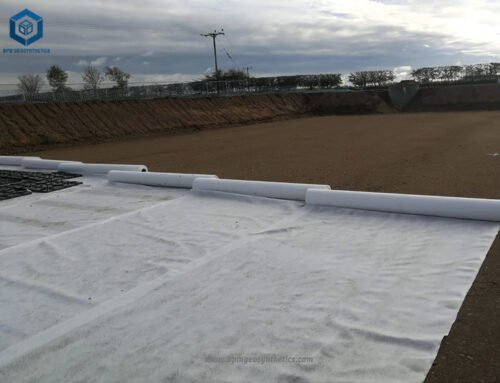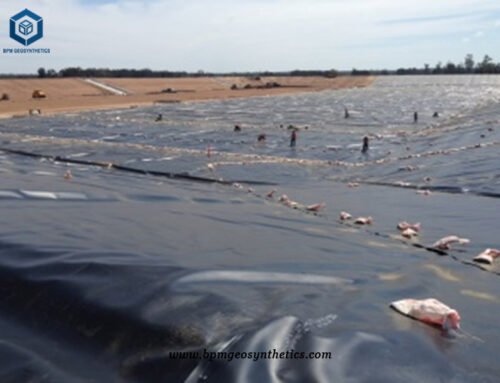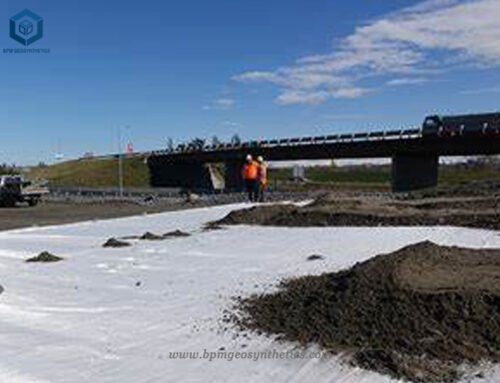HDPE geo membranes, also known as HDPE geomembranes, act as protective barriers, safeguarding structures against moisture, liquids, gases (such as radon, carbon dioxide, and methane), and chemicals. These liners are highly preferred for lining projects due to their excellent anti-aging and waterproof properties. HDPE geo membranes find extensive application in various industries, including water conservation, petrochemicals, agriculture, and aquaculture.
In this article, let’s delve into the deifinition, advantages and case study of HDPE geo membranes.
1. What Are HDPE Geo membranes?
HDPE geo membranes are synthetic liners made from a thermoplastic polymer called High-Density Polyethylene (HDPE). HDPE is renowned for its exceptional strength, durability, and resistance to chemical degradation. Geo membranes manufactured from HDPE are widely utilized in a variety of geotechnical and environmental applications. They are primarily employed for containment purposes, providing effective barriers to prevent the migration of fluids or contaminants.
HDPE geo membranes play a crucial role in environmental protection by preventing the seepage of hazardous substances into the soil or groundwater. They are commonly used in projects involving waste management, landfills, mining operations, and agricultural applications, among others.
These geomembranes act as reliable barriers, effectively isolating and containing liquids or gases. They provide excellent resistance to punctures, tears, and UV radiation, ensuring long-term performance and integrity. Their high chemical resistance allows them to withstand exposure to various substances without degradation, making them suitable for a wide range of environmental conditions.
In geotechnical applications, HDPE geo membranes are used for slope protection, erosion control, and soil stabilization. They offer stability and reinforcement to structures, minimizing soil erosion and improving overall durability.
HDPE geomembranes are valuable engineering materials that provide containment, environmental protection, and geotechnical solutions. Their exceptional properties make them a preferred choice for numerous projects requiring reliable, long-lasting, and environmentally sound solutions.
2. What Are Advantages of of HDPE Geo Membranes for Biogas digester Project?
The use of HDPE geo membranes in biogas digester projects in Zambia offers several advantages:
2.1 Cost Savings
HDPE geo membranes contribute to cost savings by enabling the biological composting and anaerobic fermentation of manure within the digester. This reduces the reliance on external sewage treatment facilities, leading to lower sewage treatment fees and operational costs for the project.
2.2 Pollution Prevention
The anti-seepage properties of HDPE geomembranes prevent the leakage of harmful impurities from the biogas digester. This protects the downstream water quality, particularly the groundwater, ensuring that it remains free from contaminants. By safeguarding the water sources relied upon for drinking, the use of HDPE geomembranes promotes the health and well-being of the local population.
2.3 Construction Efficiency
HDPE geo membranes offer a breakthrough in traditional biogas digester construction materials. By utilizing impermeable geomembrane materials, the reliance on conventional construction materials is reduced. This not only lowers construction costs but also addresses issues related to material scarcity and high prices. The lightweight and flexible nature of HDPE geomembranes further enhances construction efficiency, allowing for faster and more streamlined installation.
2.4 Durability and Longevity
HDPE geo membranes are known for their durability and longevity. They are resistant to chemical degradation and UV radiation, ensuring a prolonged service life. This reduces the need for frequent replacements and maintenance, leading to further cost savings over the lifespan of the biogas digester project.
2.5 Environmental Sustainability
By preventing the leakage of harmful substances and pollutants, HDPE geomembranes contribute to environmental sustainability. They help in the proper containment and management of biogas digester waste, minimizing the risk of soil and water pollution. This promotes sustainable practices in biogas production and ensures the overall ecological integrity of the project site.
The use of HDPE geo membranes in biogas digester projects in Zambia brings economic benefits through cost savings, environmental benefits through pollution prevention, and improved construction efficiency. These advantages contribute to the overall success and sustainability of biogas digester projects, supporting the country’s renewable energy goals and promoting a cleaner and healthier environment.

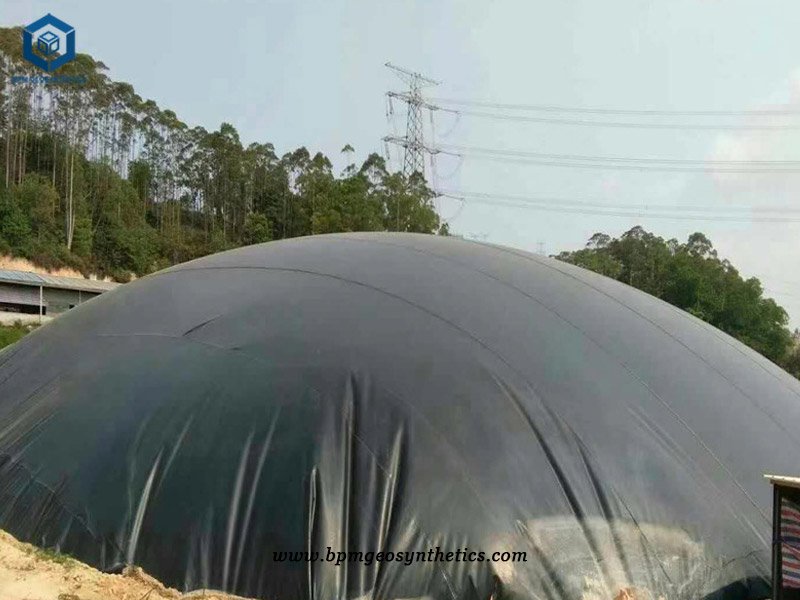
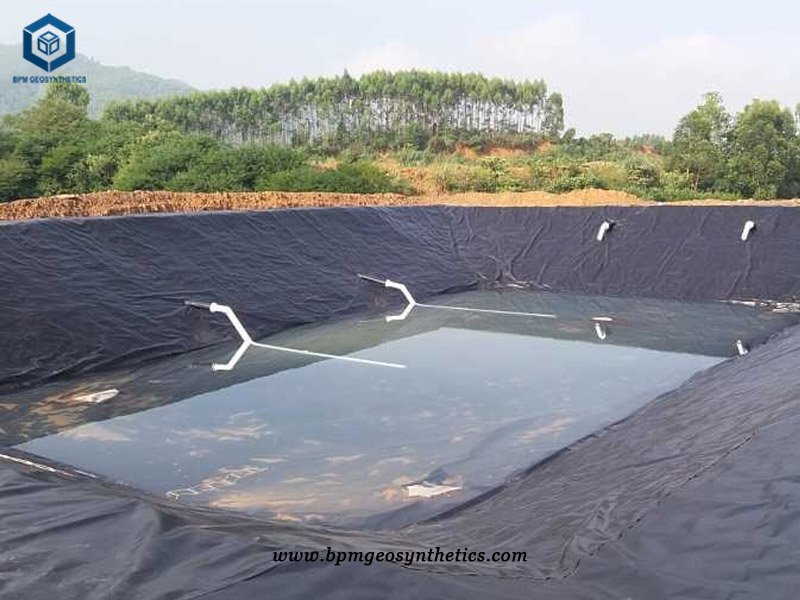
3. CASE Study of BPM HDPE Geo Membranes Zambia for Biogas Digester Projects
BPM HDPE Geo Membranes have been successfully utilized in biogas digester projects in Zambia, providing numerous benefits and addressing critical environmental challenges. Poultry breeding pollution is a significant concern, contributing to water pollution and hindering the sustainable development of animal husbandry. To combat this issue, the “blister manure” process has been adopted, leading to overloaded sewage treatment projects and the need for effective solutions.
BPM HDPE Geo Membranes serve as an ideal solution for biogas digester projects, acting as a reliable barrier to prevent the leakage of pollutants into the environment. These membranes effectively manage mixed manure, ensuring proper waste treatment and containment. With their exceptional longevity, durability, and resistance to chemicals and UV radiation, BPM HDPE Geo Membranes are well-suited for the demanding conditions of biogas digester projects. They contribute to pollution control and support sustainable agricultural practices.
The use of HDPE Geo Membranes in biogas digester projects offers several advantages. The smooth HDPE geomembrane, made from high-density polyethylene (HDPE) and incorporating carbon black, antioxidants, anti-aging agents, and UV resistance components, exhibits excellent resistance to UV radiation and is suitable for exposed conditions.
Biogas digester projects utilizing HDPE Geo Membranes provide renewable energy options and replace fossil fuels. The geomembranes’ anti-aging, acid and alkali resistance, and rodent resistance properties make them essential in biogas digester projects. The waterproof geomembrane biogas digester offers numerous benefits, including large anaerobic fermentation volume, extended wastewater retention period, increased biogas production, and reduced operation and treatment costs. It is particularly well-suited for large-scale farms and those implementing the “blister manure” process. The project also saves on fertilizer costs.
The integration of HDPE Geo Membranes in biogas digesters ensures the complete sealing of anaerobic ponds. This approach offers simple and cost-effective construction, convenient operation and maintenance, extended sewage retention time, effective digestion, and strong anti-seepage performance. The biogas digester HDPE Geo Membranes resolve issues related to water seepage, leakage, and air leakage caused by temperature changes, as well as problems associated with corrosion, blockages, and high operating costs in other types of biogas projects.
A BPM customer in Zambia discovered the company through its website and sought assistance in constructing a biogas digester to address animal breeding pollution. The recommendation was to use high-standard ASTM standard HDPE Geo Membranes, known for their high tensile strength, corrosion resistance, and excellent anti-seepage properties. These membranes are the primary material for biogas digesters and sedimentation tanks in farms, effectively solving the customer’s pollution challenges. To withstand long-term exposure to wind and sunlight, HDPE Geo Membranes with superior aging resistance were suggested, with a recommended thickness of 2mm. The top film of the geomembrane is produced using blown film technology, surpassing the performance of ordinary laminating film. For the bottom membrane, a 1.5mm ASTM standard HDPE Geo Membrane was advised to provide sewage coverage and protect the top HDPE Geo Membrane.
4. Summary
HDPE geo membranes are waterproof barrier materials made from high polymer resins. They consist of high-density polyethylene (HDPE) as the main component, along with carbon black, anti-aging agents, antioxidants, ultraviolet absorbers, stabilizers, and other additives. These geomembranes exhibit excellent resistance to environmental stress cracking and chemical corrosion. They can withstand a wide range of operating temperatures and have a long service life. HDPE geo membranes find extensive application in various projects, including biogas digesters, tailings storage sites, channel and dam seepage prevention, and subway construction. Their versatility and durability make them a popular choice for such containment and waterproofing needs.
BPM has been specializing in delivering one stop geosynthetics products and solutions to worldwide customers since its foundation in 2007. BPM had provided many types of effective and state of the art geomembranes, geotextiles, geocells, geosynthetic clay liners (GCLs), drainage boards, geogrids to over 81 countries.
BPM is not only manufacturing best quality geosynthetic products but also providing professional design and installation service. OEM, ODM, custom development and fabrication are also available. If you have any questions or inquiries, please contact us, we will reply as soon as possible.


